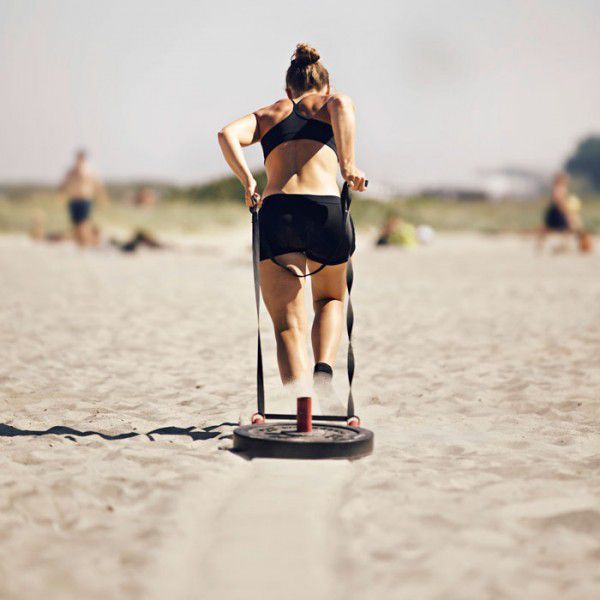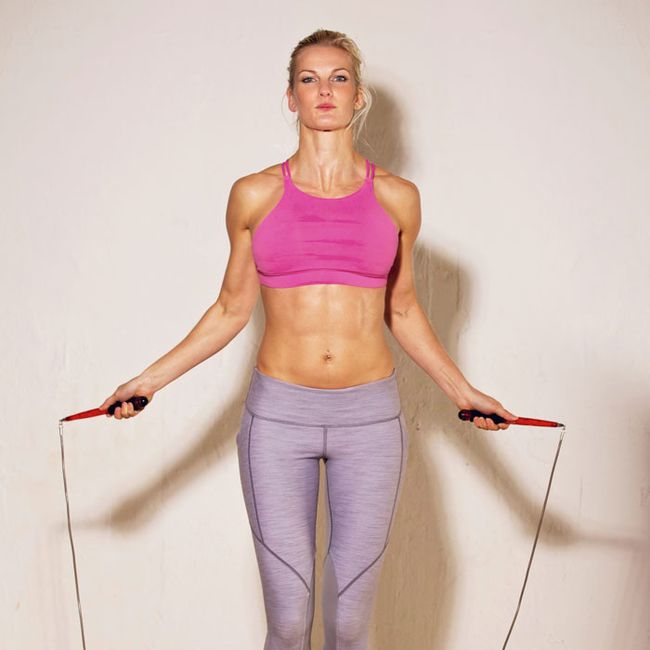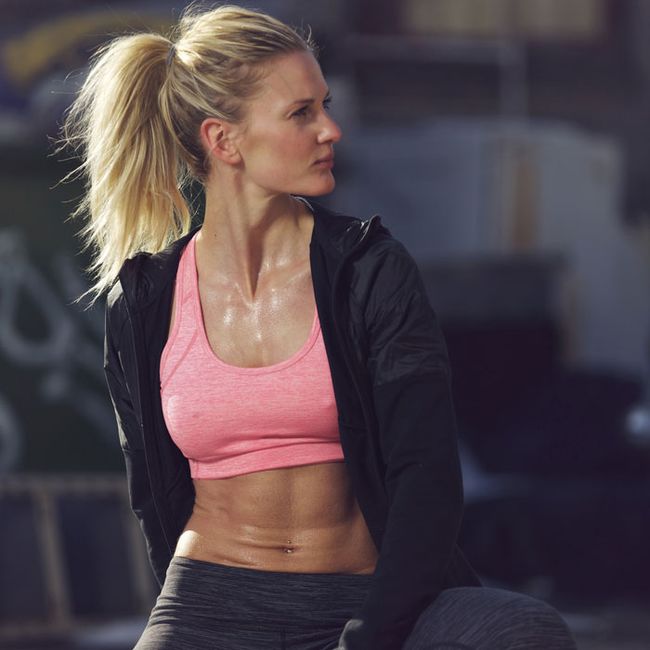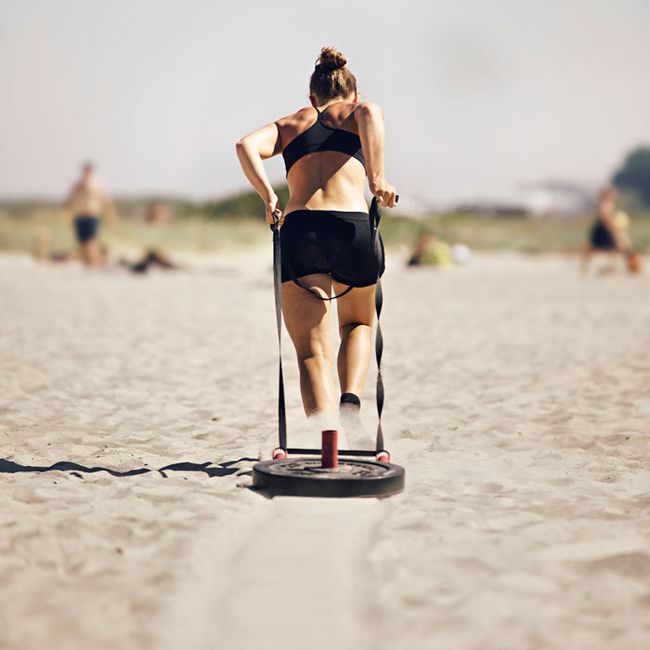
From Tabata training to Tough Mudder, this year's most popular workout crazes have major staying power
A Whole Lotta Tabata

It’s not surprising that Tabata training continues to gain popularity among gym goers everywhere. When performed correctly, this 4-minute fat-burning workout results in more fitness gains than spending more than four times as long (20 minutes) on the treadmill, says Michele Olson, Ph.D., professor of exercise science at University of Alabama Montgomery.
The original Tabata protocol consists of 20 seconds of absolute maximum effort followed by 10 seconds of rest, repeated eight times total. Studies show this style of training can burn up to 15 calories a minute, making it one seriously effective way to shed pounds and increase your fitness level. If you haven’t tried it yet, give one of these 10 Tabata routines a try!
Core Training Continued

Core training (the whole core, not just the abs you can see in the mirror) continues to be a primary focus in fitness programs. “We know more and more about the importance of strength and core training for maintaining muscle mass and giving us better balance and lower risk of injuries,” Olson says.
The core training trend is evident in programming for popular workouts such as CrossFit, kettlebell training, and bodyweight workouts. So skip the crunches and carve your core with multi-muscle movements like the ones in this killer kettlebell workout.
Mud Runs and Obstacle Event Training Programs

Interest in mud runs and obstacle course events like Tough Mudder, Spartan Race, Dirty Girl, Diva Dash, Zombie Runs, etc. aren’t losing any steam, according to Jessica Matthews, M.S., fitness expert and associate professor of exercise science at Miramar College. While these events weren’t a new trend in 2013, we started to see more event-specific training programs emerge this year, with many fitness professionals offering personal and small group training to help prep potential race participants, Matthews says.
"Since these events typically incorporate a variety of obstacles (everything from crawling under wire to scaling walls), it's important that individuals train properly and focus on developing the specific skill-related parameters of fitness, such as power, speed, agility, balance, coordination, and reactivity to ensure safety and success come race day," Matthews says.
New Ways to Warm Up

“As new research continues to emerge, how we approach the beginning of our workouts continues to shift and change,” Matthews says. There’s been greater focus on dynamic warm-ups that include both myofascial release (typically in the form of foam rolling) and exercises/movement prep to improve joint range of motion. This helps prepare the body for a more efficient workout and decreases risk for overuse injuries, she says.
So forget old-school toe touches and side bends. Matthews recommends starting your next workout with some foam rolling exercises to help reduce tension and alleviate potentially problematic muscle tightness and following it up with a series of dynamic movements that take your joints through a full range of motion.
Corporate Wellnesss Programs

This trend has seen steady growth over that past few years, but with new healthcare policies going into effect in 2014, it’s recently taken center stage. “With the Affordable Care Act going into place on January 1, 2014, employers have taken a great interest in investing in workplace wellness programs and initiatives to build a happy, healthy workforce that will help them to keep rising healthcare costs down,” Matthews says. Companies—big and small–may offer employees everything from on-site fitness classes and gym memberships to health coaching services, seminars, and standing workstations.
Not sure what kind of health benefits your employer offers? Talk to an HR representative to get the scoop—you may be missing out on some serious health perks!
Bodyweight Training

Both traditional and primal-style bodyweight training (like Equinox’s Animal Flow workout) are attracting more and more fit followers, according to Carol Espel, senior global director of group fitness and pilates for Equinox. From basic movements like pushups and squats to the more complex sprawls, crawls, and climbs, using your own body as resistance can be one of the most effective ways to achieve your fitness goals.
Bodyweight-only workouts are very challenging for the entire body and produce fast results in terms of strength building and endurance, Espel says. So don’t expect this trend to disappear anytime soon!
Metabolic Resistance Training (MRT)

Metabolic resistance training is accomplished by performing a total-body, strength-training workout as a circuit with little to no rest between movements (Click here for a simple guide to circuit training). This style of training is excellent at increasing excess post-exercise oxygen consumption (EPOC), which is just a fancy way of saying that you’ll burn more total calories. In fact, research shows that a very demanding MRT session can elevate EPOC for up to 38 hours after your workout is over.
"Metabolic training continues to thrive because it's so quick to bring results; many participants are hooked," Espel says. "The high-intensity interval training formats are here to stay because, when utilized fully, they burn the most calories in the shortest amount of time."
Barre-Fusion Workouts

The barre trend is still thriving, but many studios have started to incorporate fusion-style classes into their class lineup to keep programming fresh, exciting, and even more effective. “Many programs upped the intensity this year by adding things like ‘mega-reformers’ and cardio elements to progress the workout and keep participants engaged,” Espel says.
The CrossFit/Paleo Connection

While CrossFit has been gaining popularity for several years, 2013 saw a rise in the correlation between Paleo diet fans and CrossFit devotees, says Jacque Ratliff, exercise physiologist and spokesperson for the American Council On Exercise. “CrossFit is ‘constantly varied functional movements performed at relatively high intensity’ and many CrossFitters follow a Paleo diet that rids the body of processed food, including dairy and grains,” Ratliff says. While you don’t have to do CrossFit to follow a Paleo plan (or vice versa), this caveman-inspired eating style centers around a low-carb, high-protein, high-fiber, and healthy fat-rich diet and seems to work well for many CrossFit enthusiasts.
Whether or not you go Paleo or become a CrossFit devotee is a personal choice, but many find that the group support and motivation of fellow CrossFit trainees might help them stay on track better than dieting solo.
Training Like an Athlete (Even If You Aren't One)

Bootcamp-style workouts expanded into a new realm of training this year—one that was even more focused on sports conditioning and athleticism for all fitness levels. "With trainers gaining more knowledge on strength and conditioning drills for all sports, classes that help those non-athletes train like athletes are making their appearance in fitness centers around the country," Ratliff says.. These types of sports conditioning classes include mobility/stability warm-ups followed by strength training, and they also incorporate metabolic conditioning to improve cardiovascular endurance.
Want to try it for yourself? Check out Olympic snowboarder Gretchen Bleiler’s stamina-building and core-strengthening workout. Even if you never plan to fly down a mountainside, your body can still reap the benefits of training like a pro athlete.






































